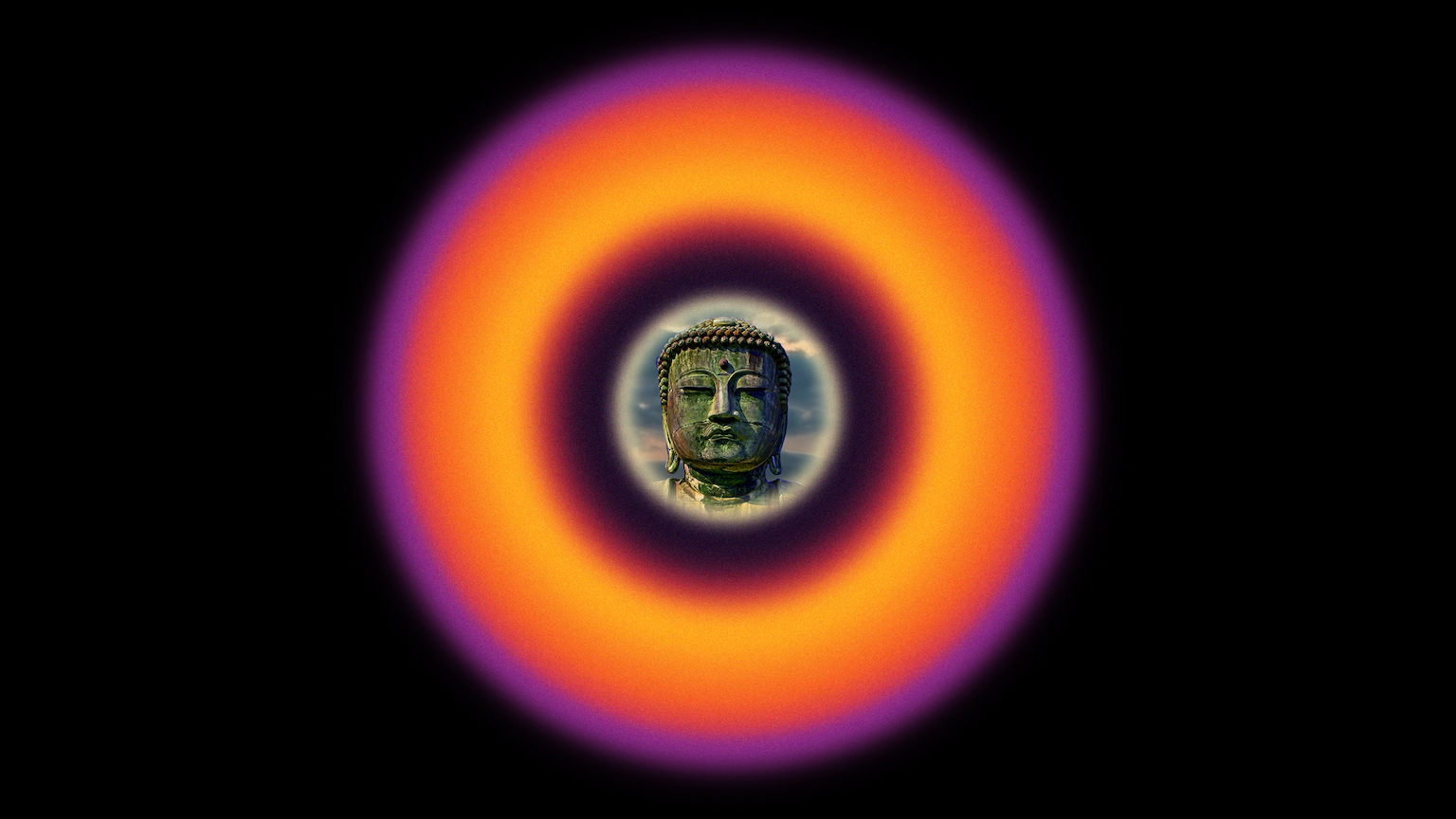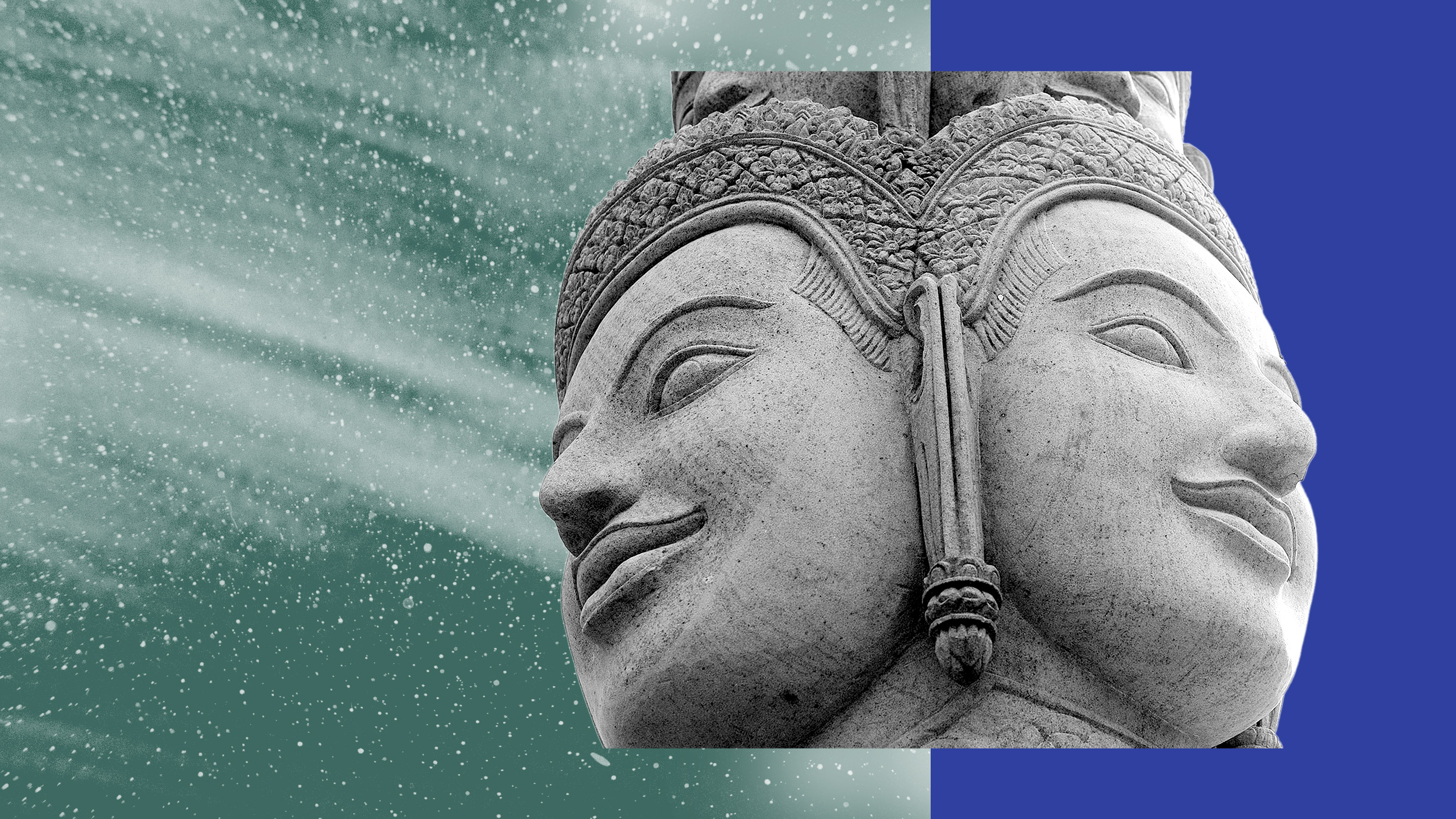What does Buddhism offer physics?

- Fifty years ago, two famous books argued for a link between physics and Buddhist philosophy. “Quantum Buddhism” was born.
- The arguments were never fully convincing. The biggest problem is that the authors privileged one among many different interpretations of quantum mechanics.
- Now is an exciting time to re-examine perspectives in the long history of Buddhist philosophy that might prove fruitful for physicists.
Almost 50 years ago, two influential books on Buddhism and physics were published. First came The Dancing Wu Li Masters by Gary Zukav. Fritjof Capra’s The Tao of Physics followed. Both books were international bestsellers. Both attempted to show how quantum mechanics — the physics of molecules, atoms, and subatomic particles — recovered the core tenets of Buddhist philosophy.
This weekend, Marcelo and I will attend an amazing meeting called “Buddhism, Physics, and Philosophy Redux” at the University of California, Berkeley Center for Buddhist Studies. Since the meeting aims to re-examine what, if any, relationship might bind Buddhist perspectives on the nature of reality to those of modern physics, I thought this would be a great time to explain why that goal is meaningful.
A matter of interpretation
I read The Tao of Physics as a student in a freshman physics class in 1981. It blew me away, but more for its excellent descriptions of quantum mechanics than for its argument that Buddhism and physics overlap. Even then, I felt the argument stretched itself too thin. As the years progressed, I got my PhD in theoretical physics and began practicing Zen Buddhism seriously. I developed a much better perspective on what Zukav and Capra were arguing for, and I bought their arguments even less.
The real problem with both books is all about interpretation; specifically, quantum interpretation. From its very start in the early 20th century, quantum mechanics was known to be weird. Classical physics builds a complete picture of the world from tiny particles bouncing off each other like nano billiard balls. Quantum mechanics, on the other hand, allows for no easy visualization.
Instead, quantum mechanics tells us that particles like atoms can be in two places at the same time until a measurement is made. It tells us that the properties of those atoms can be inherently uncertain, as if they were actually smeared out and did not have definite values. It also tells us that particles on opposite sides of the Universe can be entangled such that what happens to one instantly affects the other, even though no physical signal had time to pass between them.
For the last 100 years, physicists have scratched their heads over this basket of quantum weirdness. And over those same 100 years, they have developed different interpretations of the theory. Each interpretation paints a different picture of what is meant by an atom in terms of physical reality. In the same way, each paints a different picture of what is meant by a measurement as an interaction between something that is observed, and something else that is the observer.
One view among many
The thing is, there are many of these interpretations. One of these is called the Copenhagen Interpretation. It is named after the city where Neils Bohr, one of the founders of quantum mechanics, lived.
The interpretation does seem to have some interesting parallels with the classical philosophies that emerged from India and Asia when Buddhism was the dominant religion. In particular, the Copenhagen Interpretation seems to open a path for observers to play a strange but central role in grounding what can happen in a quantum experiment. Thus, the idea that the observer affects the observed is certainly something the Copenhagen Interpretation might seem to allow for, and this might be connected with certain tenets of Buddhism. Now, there are couple of “mights” in that last sentence. You can find physicists who are pro-Copenhagen Interpretation just as you can find Buddhist scholars who would disagree with it. But that was not the main problem with Capra and Zukov’s thesis.
The real problem with the 1970s version of Quantum Buddhism was that it privileged the Copenhagen Interpretation. It never really addressed the fact that Copenhagen was just that — an interpretation with no more validity than other interpretations (such as the Many Worlds view favored by folks like Sean Carroll). As time went on and Quantum Buddhism became a staple of New Age wackiness, that key point — the Copenhagen Interpretation is just one interpretation — was completely forgotten.
A new look at what Buddhism and physics share
Fifty years later, it is now time to re-examine Buddhist philosophical perspectives and the frontiers of physics. The point is not to show that physics is confirming the truths of Buddhism. That will never happen, nor should it. Instead, once we recognize that physics has always been influenced by philosophical ideas, we can recognize that throughout its entire history those ideas have come solely from Western philosophers. But half a world away, Buddhist philosophers were encountering many similar questions, like the nature of time and causality, or how consciousness stands in relation to the world.
Because they were coming from a different history, these Buddhists explored other kinds of responses to the same questions their Western counterparts pondered. In this way, there may be perspectives in the long history of Buddhist philosophy that prove fruitful for physicists pushing at their own frontiers — the places where we are stuck, or hitting paradoxes. That is why I am so very excited for what is going to happen over the next few days.





